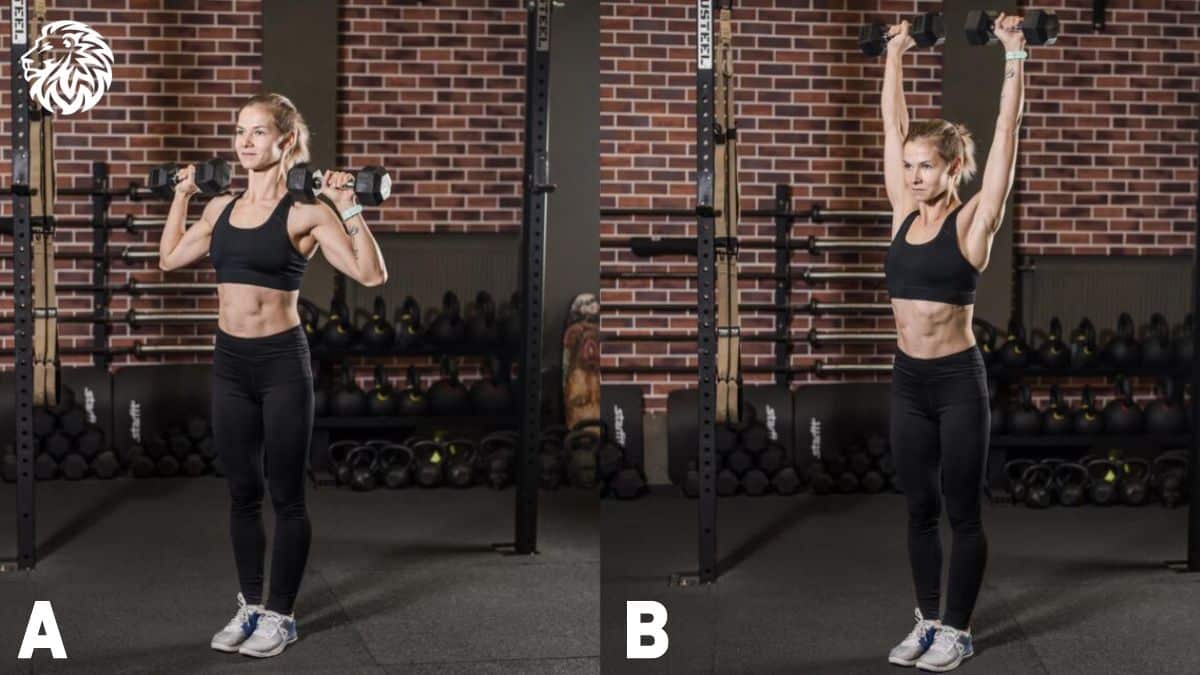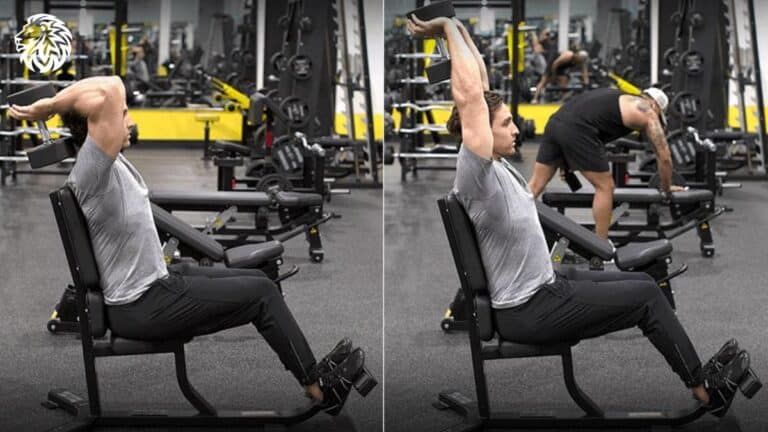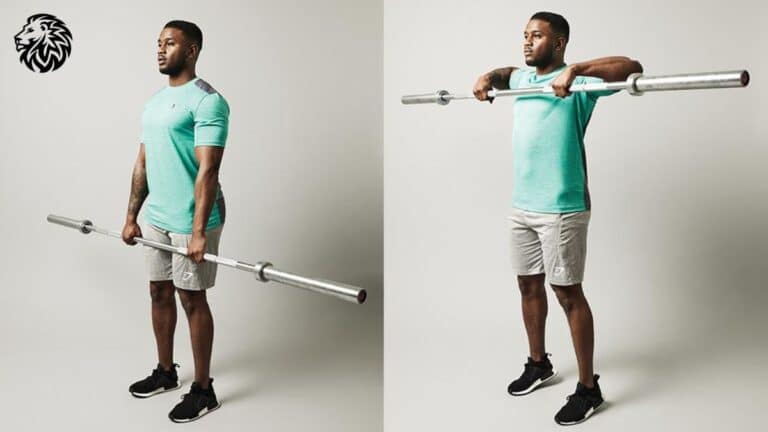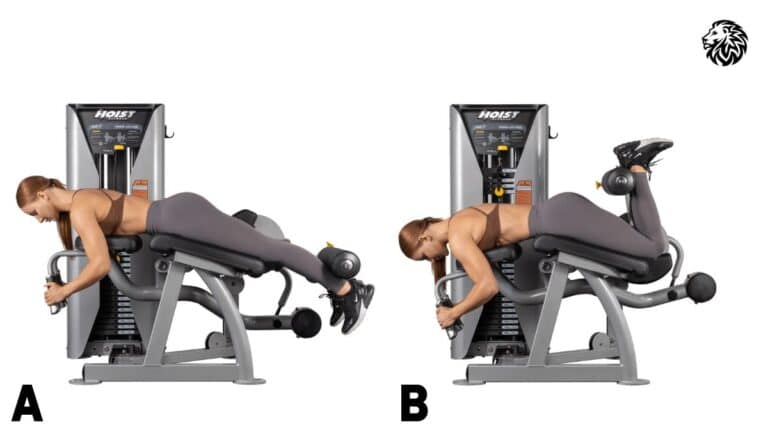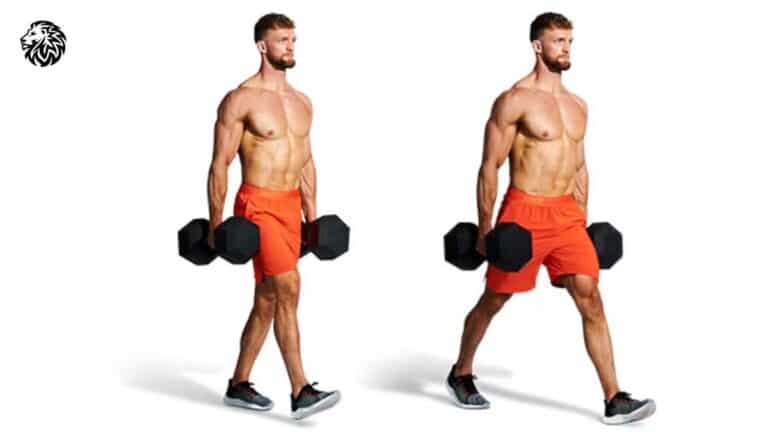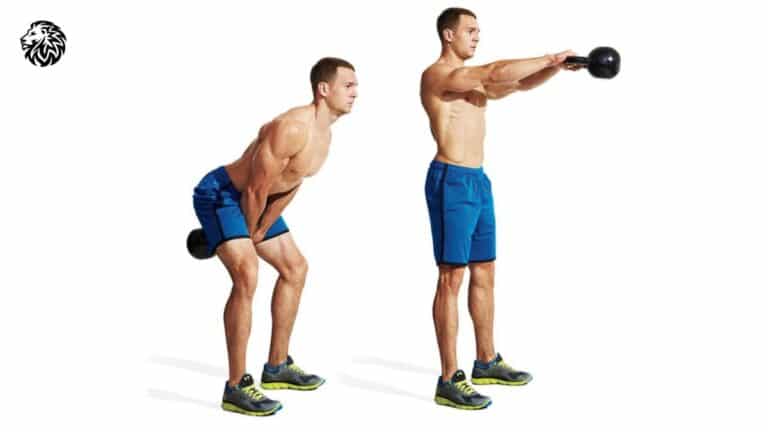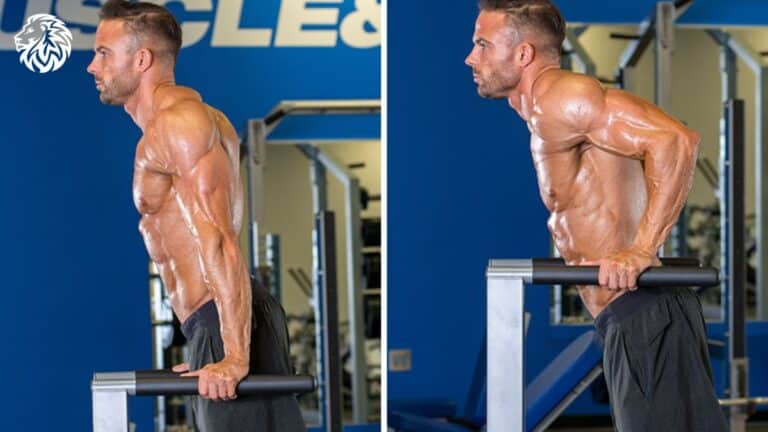The dumbbell shoulder press is one of the best exercises for building strong, well-defined shoulders. It helps improve upper body strength, enhances shoulder stability, and contributes to overall athletic performance. Unlike a barbell press, dumbbells allow for a greater range of motion and help correct muscle imbalances. Whether you’re a beginner or an experienced lifter, mastering this exercise can take your shoulder training to the next level.
Exercise Instructions for Dumbbell Shoulder Press
- Set Up: Sit on a bench with back support or stand with feet shoulder-width apart. Hold a dumbbell in each hand at shoulder height with palms facing forward.
- Engage Your Core: Keep your back straight and engage your core to stabilize your body.
- Press Up: Extend your arms and press the dumbbells overhead until your arms are fully extended. Avoid locking out your elbows.
- Lower the Weights: Slowly lower the dumbbells back to shoulder height in a controlled motion.
- Repeat: Perform the desired number of repetitions while maintaining proper form.
Muscles Targeted
The dumbbell shoulder press primarily targets the deltoid muscles, which consist of three heads:
- Anterior Deltoid (Front Shoulder) – Engaged when pressing the weight overhead.
- Lateral Deltoid (Side Shoulder) – Activated throughout the movement, helping create width in the shoulders.
- Posterior Deltoid (Rear Shoulder) – Stabilizes the movement to maintain control.
Secondary muscles involved include:
- Triceps Brachii – Assists in extending the arms during the press.
- Upper Trapezius – Supports shoulder elevation.
- Core Muscles – Engaged to stabilize the body, especially when performing the exercise standing.
Why This Exercise is Important
The dumbbell shoulder press is essential for several reasons:
- Builds Shoulder Strength – Strengthens all three heads of the deltoids, improving overall shoulder function.
- Improves Upper Body Stability – Helps strengthen supporting muscles for better control and injury prevention.
- Enhances Athletic Performance – Useful for sports and activities requiring overhead movements.
- Increases Muscle Balance – Dumbbells allow each arm to work independently, preventing strength imbalances.
Tips and Things to Avoid
- Use Proper Weight – Choose dumbbells that allow you to maintain good form without excessive strain.
- Avoid Arching Your Back – Keep your core tight to prevent excessive arching, which can strain your lower back. If you find yourself leaning too far back, reduce the weight.
- Control the Movement – Lower the dumbbells slowly instead of letting them drop quickly. This keeps tension on the muscles and reduces injury risk.
- Don’t Lock Out Your Elbows – Keep a slight bend at the top to avoid unnecessary joint stress and maintain control.
- Keep Your Wrists Aligned – Avoid bending your wrists backward, as this can cause strain. Keep them in a neutral position for better support.
- Breathe Properly – Inhale as you lower the dumbbells and exhale as you press them up. This helps maintain stability and energy during the lift.
- Keep Your Elbows at a Natural Angle – Avoid flaring them too wide, as this can put extra strain on your shoulders. Instead, keep them slightly in front of your body for better alignment.
- Maintain a Strong Posture – Whether seated or standing, avoid shrugging your shoulders or leaning forward excessively.
Reps and Sets
| Fitness Level | Sets | Reps |
|---|---|---|
| Beginner | 3 | 10-12 |
| Intermediate | 4 | 8-10 |
| Advanced | 4-5 | 6-8 |
Other Exercises to Use
To build well-rounded shoulders, include these exercises in your routine:
- Lateral Raises – Targets the lateral deltoids for broader shoulders.
- Front Raises – Focuses on the anterior delts.
- Rear Delt Flys – Strengthens the posterior delts.
- Arnold Press – Adds variety and increases shoulder engagement.
- Upright Rows – Works the traps and shoulders together.
Final Thoughts: Dumbbell Shoulder Press
The dumbbell shoulder press is a fundamental exercise for building shoulder strength, improving muscle balance, and enhancing upper body stability. Performing it with proper form and incorporating complementary exercises can maximize results while reducing the risk of injury. Whether you train for strength, aesthetics, or athletic performance, adding this movement to your routine is a smart choice.
Frequently Asked Questions about Dumbbell Shoulder Press
What weight should I start with for the dumbbell shoulder press?
Beginners should start with light to moderate weights (10-20 lbs) to focus on form before progressing to heavier weights.
Can I do the dumbbell shoulder press while standing?
Yes, performing the press standing engages more core muscles, but seated variations provide better stability and focus on the shoulders.
How often should I do dumbbell shoulder presses?
Include this exercise in your workout 1-2 times per week, depending on your training goals and overall shoulder volume.
Should I do dumbbell shoulder presses before or after other shoulder exercises?
It’s best to perform this exercise first when your muscles are fresh, as it is a compound movement requiring maximum strength.
Is the dumbbell shoulder press better than the barbell shoulder press?
Both exercises are effective, but dumbbells allow a greater range of motion and help correct imbalances, while barbells allow for heavier lifting.
